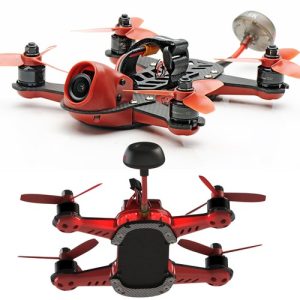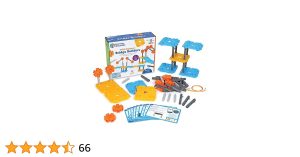Have you ever wondered what the oldest toy in the world is? Imagine holding something that children played with thousands of years ago—something that sparks the same joy you feel when you play today.
Toys connect us across time, unlocking memories and happiness no matter your age. You’ll discover the fascinating story behind the very first toy ever made and why it still captures hearts today. Keep reading, because what you learn might surprise you and change how you see your own favorite toys forever.

Credit: www.popsci.com
Ancient Toys Unearthed
Ancient toys tell stories of childhood from thousands of years ago. These small objects show how children played long before modern toys existed. Archaeologists find these toys in old settlements and caves. Each discovery reveals details about early human life and culture.
These toys are more than playthings. They connect us to our past. They show creativity and care in their making. Understanding ancient toys helps us learn about early societies and their daily lives.
Archaeological Discoveries
Experts uncover toys during digs at ancient sites worldwide. Some toys date back over 4,000 years. Clay figurines, small dolls, and carved animals are common finds. These items often appear near homes or burial sites. Their placement suggests toys were important to families. Some toys even reflect the animals and tools people used daily.
Materials And Craftsmanship
Ancient toys were made from materials like wood, clay, bone, and stone. Craftsmen shaped these materials by hand. Simple tools helped carve and smooth toy surfaces. Some toys had moving parts or painted details. The care in crafting shows that toys were valued items. These early toys reveal skill and imagination in their creators.
Toys From Prehistoric Times
Toys have always been part of human life, even in prehistoric times. Early humans made simple toys from things around them. These toys helped children play and learn. They also showed creativity and skill. Exploring these ancient toys gives us a glimpse into early human culture and daily life.
Stone And Bone Playthings
Stone and bone were common materials for making toys. Early humans carved small objects from these hard materials. They made balls, spinning tops, and miniature tools. These toys were durable and could be used outdoors. Children likely enjoyed tossing, spinning, and pretending with them. Such playthings helped develop hand-eye coordination and imagination.
Early Figurines And Dolls
Figurines and dolls date back thousands of years. People crafted them from clay, stone, and bone. These small figures often represented animals or humans. Dolls may have been used in storytelling or rituals. They also allowed children to act out daily life scenes. These toys reveal early artistic skills and cultural values.
Toys Of Ancient Civilizations
Toys have existed for thousands of years. Ancient civilizations made toys for children and adults. These toys show us how people played long ago. They also tell stories about daily life and culture.
Many old toys still survive today. They were made from wood, clay, and stone. Some toys were simple, while others were quite detailed. Each culture had its own favorite types of toys.
Egyptian Play Objects
Ancient Egyptians loved toys and games. They made dolls from wood and clay. Small animal figures were common playthings. Children also enjoyed spinning tops and hoops. Some toys had religious or magical meanings.
Mesopotamian Games
Mesopotamia is one of the oldest civilizations. People there played board games with stones or shells. Dice games were popular among all ages. Toys included miniature weapons and animal figurines. These objects helped teach skills and stories.
Greek And Roman Toys
Greeks and Romans had many toys for children. Dolls made of wax or cloth were common. Children played with toy chariots and animals. Games like knucklebones tested skill and luck. These toys often reflected daily life and myths.

Credit: shcydigitalchildhoods.org
Cultural Significance Of Old Toys
Toys from ancient times tell us much about old cultures. They show how people lived, what they valued, and how they taught their children. Old toys are more than playthings. They hold deep meaning in many societies. They helped shape traditions and passed lessons from one generation to the next.
These toys often carried messages about life, beliefs, and skills. They helped children learn and prepared them for adult roles. Some toys also had spiritual roles. They were part of rituals and religious acts, connecting people to their gods and ancestors.
Educational Roles
Old toys taught children basic skills. They helped improve hand-eye coordination and problem-solving. Dolls and figurines showed family roles and social behavior. Toy weapons and tools prepared kids for hunting or farming.
Many toys encouraged imagination. Children practiced real-life tasks through play. This practice helped them grow into responsible adults. Toys also passed cultural stories and values quietly and effectively.
Religious And Ritual Uses
Some ancient toys had sacred meanings. People used them in ceremonies to honor gods or spirits. Toys could represent deities or mythical beings. They helped people feel closer to the divine.
In some cultures, toys were offerings or symbols of protection. They played roles in rituals for health, luck, or fertility. Such toys held power beyond simple amusement. They connected the physical world with spiritual life.
Evolution Of Toy Design
Toys have changed a lot over thousands of years. The oldest toys were simple and made by hand. Over time, people found new ways to make toys more fun and easier to produce. The design of toys shows how culture and technology changed through history.
From Handmade To Manufactured
Long ago, toys were carved from wood, clay, or stone. Each toy was unique because it was made by hand. Families often made toys at home using available materials. These toys helped children learn about the world around them.
With the rise of factories, toys began to be made in large numbers. Machines allowed faster and cheaper production. This change made toys more available to many children. Mass production also introduced new shapes and styles.
Influence Of Technology
Technology has played a big role in toy design. New materials like plastic made toys lighter and more colorful. Electronics added sounds and movements to toys. These features made playtime more exciting and interactive.
Today, toys can connect to the internet or use sensors. These smart toys teach skills like coding and problem-solving. Technology keeps pushing the boundaries of what toys can do. It shapes how children learn and play in the modern world.
Timeless Appeal Of Classic Toys
Classic toys have a special place in our hearts. They remind us of simpler times and childhood joy. Their charm never fades, crossing generations with ease. These toys connect past and present through play and imagination.
Their design is often simple but full of fun. Children find endless ways to enjoy them. Parents and grandparents share stories about these toys, creating a strong bond. This timeless appeal keeps classic toys alive today.
Why Some Toys Endure
Simple designs make toys easy to understand and use. They encourage creativity and open-ended play. Toys that let children imagine new stories last longer. Durability also helps; strong materials survive many years of play.
Many classic toys have universal themes. These themes speak to all children, no matter where they live. Playing with these toys does not require special skills or knowledge. This makes them accessible and loved worldwide.
Modern Versions Of Ancient Toys
Today, many old toys get new life with modern updates. Some have bright colors or use new materials. Others add simple technology but keep the original fun. These versions attract both new kids and adults.
Examples include spinning tops made of plastic instead of wood. Dolls now come with more lifelike features but simple play. Even board games use digital apps to enhance experience. These updates keep classic toys relevant and exciting.

Credit: digventures.com
Frequently Asked Questions
What Is Considered The Oldest Toy In The World?
The oldest toy in the world is a simple stone doll found in a 4,000-year-old Egyptian tomb. It shows how early humans valued play.
How Old Is The Oldest Known Toy?
The oldest known toy dates back over 4,000 years, discovered in ancient Egypt and Mesopotamia. It reveals early childhood play.
What Materials Were Used For Ancient Toys?
Ancient toys were made from stone, wood, bone, and clay. These materials were durable and easy to shape for children.
Why Were Toys Important In Ancient Cultures?
Toys helped develop skills, imagination, and social interaction among children. They also reflected cultural beliefs and traditions through play.
Conclusion
Toys have been part of human life for thousands of years. The oldest toy shows how people long ago enjoyed playtime. Simple objects like dolls or spinning tops helped children learn and have fun. These toys connect us with the past in a special way.
They remind us that play is a natural part of growing up. Understanding old toys helps us appreciate today’s games more. Play brings joy to every generation, no matter the time or place.





